For the system shown in fog. m1>m2>m3>m4. Initially, the system is at rest in equilibrium condition., if the string joining m4 and ground is cut, then just after the string is cut.
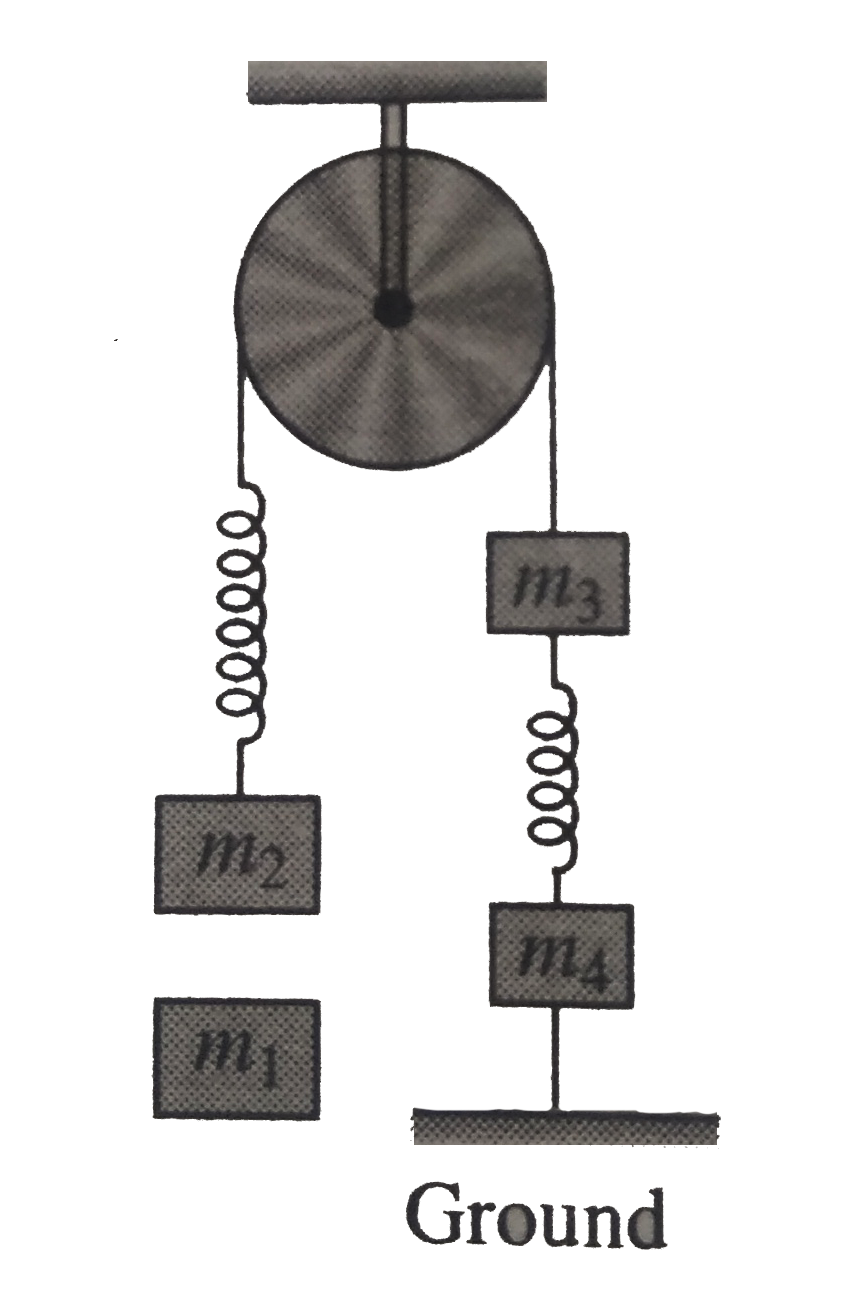
Statement I: m1,m2,m3 remain stationary.
Statement II: The value of acceleration of all the four blocks can be determined.
Statement III: Only m4 remain stationary.
Statement IV: Only m4 accelerates.
All the statement are correct.
Only I, II and IV are correct.
Only I,and II are correct.
Only II and IV are correct.
The correct Answer is:B
Before cutting the string, the tension in string joining m4 and ground is T=(m1+m2−m3−m4)g
And the spring force in the spring joing m3 and m4 is T−m4g.
As the string is cut, the spring force do not change instantly, so just after cutting the string the equilibrium of m1,m2 and m3 would be maintained but m4 accelerates in upward direction with acceleration given by
a=T+m4g−m4gm4.
Topper's Solved these Questions
- BOOK - CENGAGE PHYSICSCHAPTER - NEWTON'S LAWS OF MOTION 1EXERCISE - Multiple Correct11videos
NEWTON'S LAWS OF MOTION 1
- BOOK - CENGAGE PHYSICSCHAPTER - NEWTON'S LAWS OF MOTION 1EXERCISE - Assertion-reasoning15videos
NEWTON'S LAWS OF MOTION 1
- BOOK - CENGAGE PHYSICSCHAPTER - NEWTON'S LAWS OF MOTION 1EXERCISE - Subjective15videos
NEWTON'S LAWS OF MOTION 1
- BOOK - CENGAGE PHYSICSCHAPTER - MISCELLANEOUS VOLUME 2EXERCISE - INTEGER_TYPE10videos
MISCELLANEOUS VOLUME 2
- BOOK - CENGAGE PHYSICSCHAPTER - NEWTON'S LAWS OF MOTION 2EXERCISE - Integer type1videos
NEWTON'S LAWS OF MOTION 2
Similar Questions
A block of mass 30 kg is suspended by three string as shown in fig, Find the tension in each string.
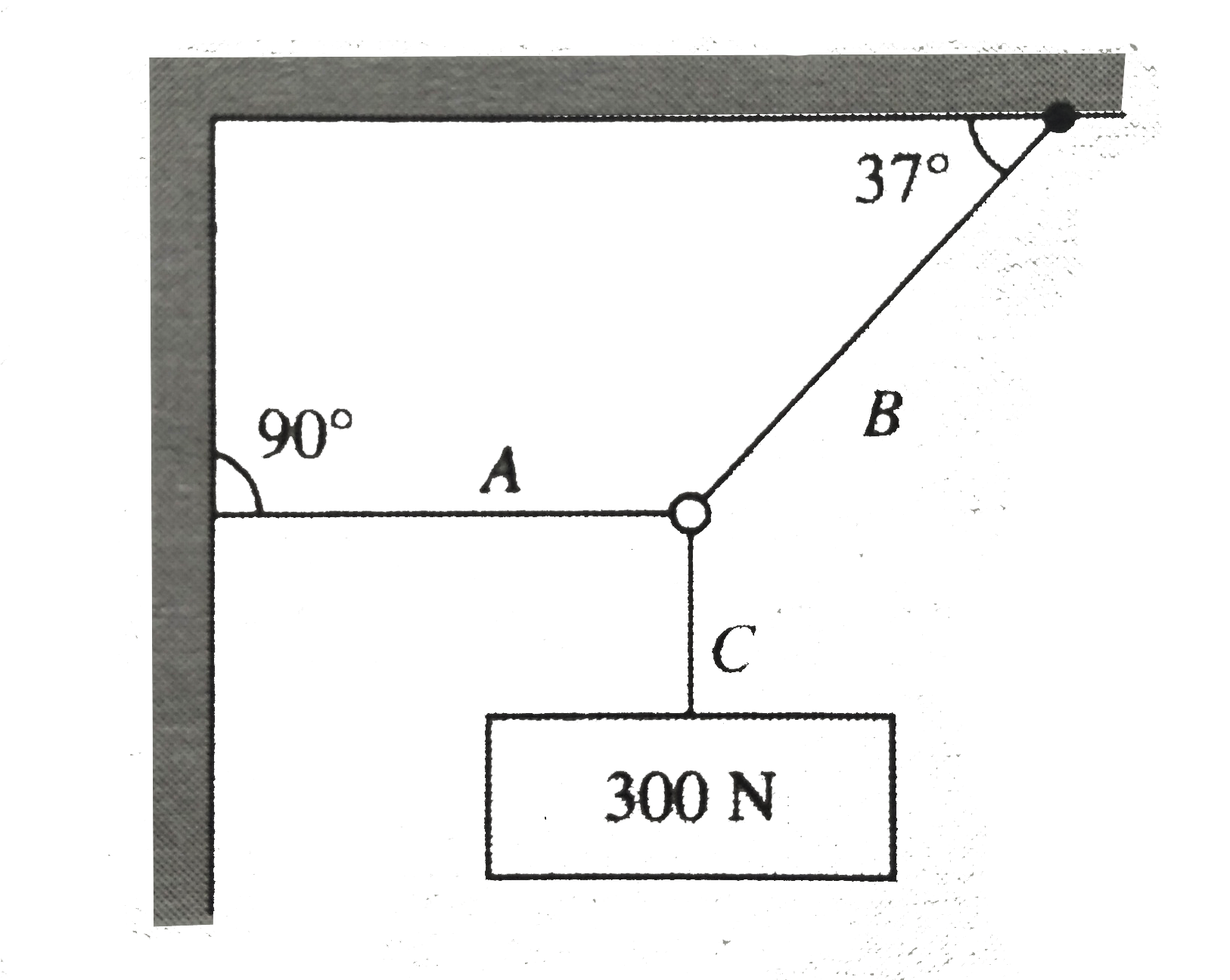 04:02View Solution
04:02View SolutionStatement I: The driver of a moving car sees a wall in front of him. To avoid collision, he should apply brakes rather than taking a turn away from the wall.
Statement II: Frictional force is needed to stop the car or taking a turn on a horizontal road.04:53View SolutionA hot- air balloon consists of a basket, one passenger, and some carge. Let the total mass be M. Even though there is an upward lift force on the balloon, the balloon is initially acceleration downwards at a rate of g/3.
(a) Draw a free-body diagram for the descending balloon.
(b) Find the upward lift force in terms of the initial total weight Mg.
(c ) The passenger notices that he is heading straight for a waterfall and decides he needs to go up. What fraction of the total weight must he drop overboard so that the balloon accelerates upward at a rate of g/2? Assume that the upward lift force remains the same.01:58View SolutionTwo blocks are arranged as shown in figure. Find the ratio of a1/a2. (a1 is acceleration of m1 and a2 that of m2)
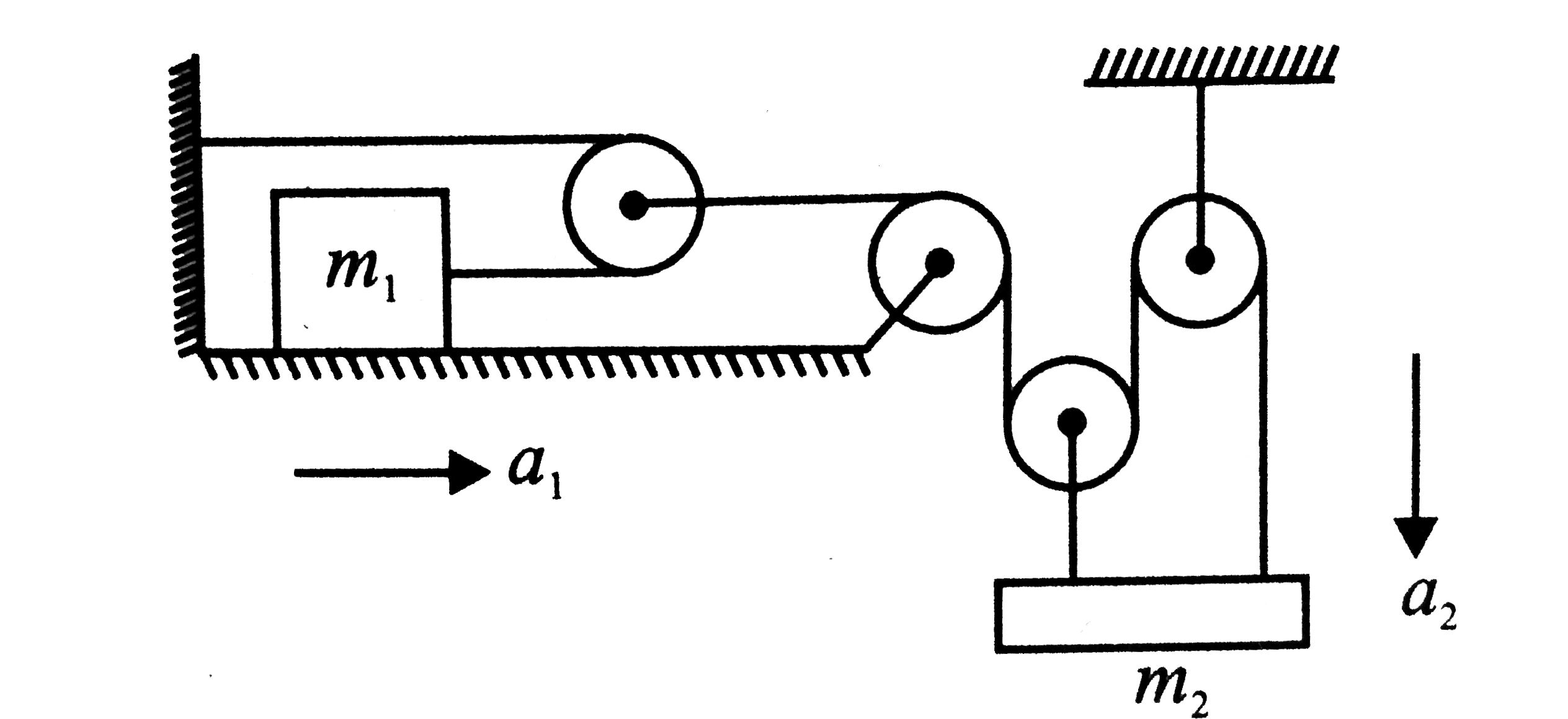 03:11View Solution
03:11View SolutionA block is moving on an inclined plane making an angle 45∘ with the horizontal and the coefficient of friction is μ. The force required to just push it up the inclined plane is 3 times the force required to just prevent it from sliding down. If we define N=10μ, then N is
04:00View SolutionThree blocks arranged with pullwy and spring as shown in fig. If the string connecting blocks m_(2) and m_(3) is cut at point A, find the acceleration of masses m_(1), m_(2) and m_(3) . Just after the string is cut at point A.
03:02View SolutionIn the system shown in fig., all pulleys are mass less and the string is inextensible and light.
(a) After the system is released, find the acceleration of mass m1
(b) If m1=1kg,m2=2kgandm3=3kg then what must be value of mass m4 so that it accelerates downwards?
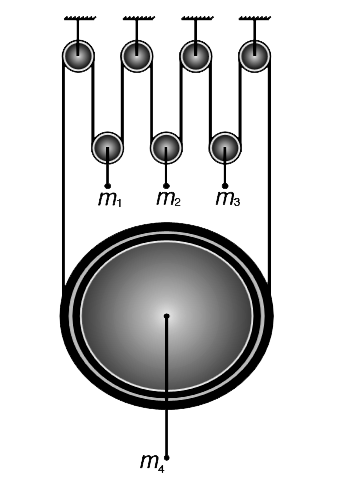 04:17View Solution
04:17View SolutionFind the acceleration of masses m1,m2 and m3 shown in figure-2.119 just after the string is cut at point A.
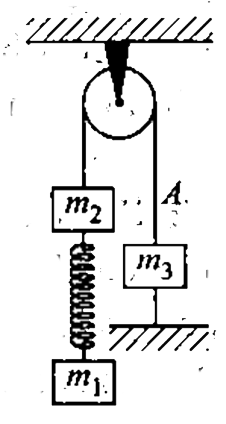
[0,(1+m1m2)g,g]07:40View SolutionIn figure shown, pulley are ideal m_(1) gt 2m_(2) . Initially the system is in equilibrium and string connecting m_(2) to rigid support below is cut. Find the initial acceleration of m_(2) If m_(1)= 6 kg , m_(2) = 2.5 kg " and "g =10ms^(-2)
03:55View SolutionTwo masses m1 and m2(m2>m1) are hanging vertically over frictionless pulley. The acceleration of the two masses is :
 View Solution
View SolutionThree masses m1,m2andm3 are attached to a string -pulley system as shown . All the three masses are held at rest and then released If m3 remains at rest , then
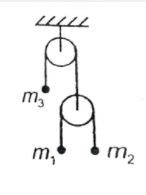 03:12View Solution
03:12View SolutionIn figure shown, pulleys are ideal m1>2m2. Initially the system is in equilibrium and string connecting m2 to rigid support below is cut. Find the initial acceleration of m2 ?
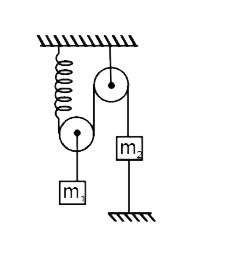 05:56View Solution
05:56View SolutionIf m1,m2(m1>m2) are the slopes of the lines which make an angle of 30∘ with the line joining the points (1, 2) and (3, 4), then m1m2=
View Solutionयदि (mi,1mi),mi>0,i=1,2,3,4 एक वृत्त पर चार भिन्न बिन्दु है तो दिखाइए की m1m2m3m4=1
05:48View SolutionConsider three blocks of masses m_(1), m_(2), m_(3) interconnected by strings which are pulled by a common force F on a frictionless horizontal table as in the figure. The tension T_(1) and T_(2) are also indicated a) T_(2) gt T_(1)" if "m_(2) gt m_(1) b) T_(2) =T_(1)" if "m_(2)=m_(1) c) T_(2) gt T_(1) always d) "acceleration of the system"=(F)/(m_(1)+m_(2)+m_(3))
04:39View Solution

